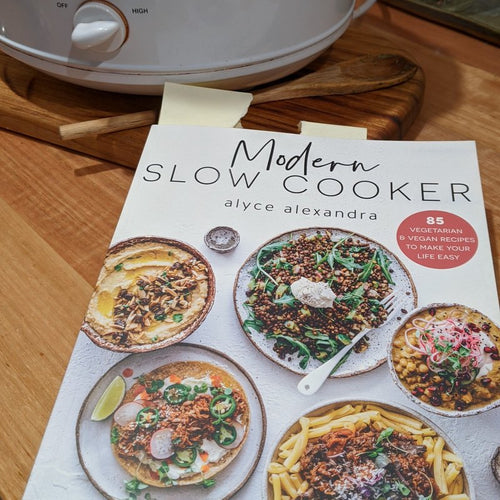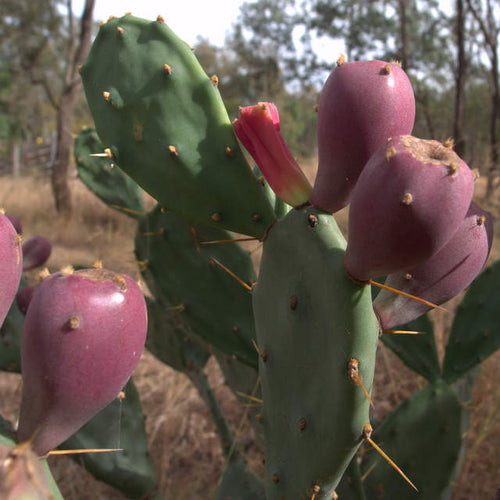Using the whole beast
Every year around winter-time we have one of our home-raised steers butchered at our property by a mobile a butcher. We fill the freezer with meat, bones and tallow, and we sometimes even keep the hide for tanning. It is very important to us that, as far as possible, we use the whole beast. If this is something that you would to do too, here are a list of posts that you may find useful.
Butchering tips and tricks
Home butcher vs meatworks
Cooking and eating all that meat
When the butcher is finished you'll be left with 200-300 kg of beef, but much of it will be cuts that you're not familiar with. As well as the tasty steaks and sausages that are easy to fry, and roasts to be roasted, you will also have a huge amount of delicious casserole meat and stock bones. I recommend that you buy a slow cooker (even a very cheap one will do the job) as it makes it easy to use up all this meat, I tell you all about my slow cooker in Real food in a slow cooker.
I also wrote more about eating meat in Should you eat animal products?. Its a bit late now if you just had a steer butchered, but you might be interested to see that current research shows that meat is not bad for your health and when raised for home butchering, its not terrible for the environment either.
Don't waste the hide
Sometimes the butcher will take the hide, but our first butcher wouldn't take it, so we decided to try tanning it. We found it very difficult to find out much about tanning, so I recorded our method in these posts - Tanning a hide (with updates here and here). We ended up with a usable rug from the first attempt, and an even better rug the second time. We haven't tried it again because our current butcher will buy the hide from us, so as least it isn't wasted, but its good to know that we can tan a hide if we ever need to again.
| Butcher day is Cheryl's favourite |
Butchering tips and tricks
Home butcher vs meatworks
The pros and cons of using a home butcher compared to sending a steer to an abattoir. We did send our first steer to be processed, but all the rest have been done at home. The main problem for us was finding a good butcher, but loading the animal on the truck and preparing all the paperwork was a real pain. Its much easier for us to have them butchered at home (and I think its better for the animal too) if you can find someone who will do it.
When you've decided to go for a home butcher, here's a post about what to expect, what to have organised and what to ask before your butcher turns up. Our first time was a bit of a disaster because we didn't know what to do, its certainly got easier since then!
Still not convinced? In this post on Farmstyle I added up the value of all the cuts of meat we got from our homekill and worked out what they would have cost from the butcher. Compared to the price of raising the steer and paying the home butcher, the meat was about half price. Is it worth it? It definitely works out better for us!
Getting the best from homekill meat
Even better than just being prepared for the basics, you can actually plan to make sure you get the best possible meat, both by the way you raise the animal, how its killed and how you handle and store the meat. Learn more in this post.
Even better than just being prepared for the basics, you can actually plan to make sure you get the best possible meat, both by the way you raise the animal, how its killed and how you handle and store the meat. Learn more in this post.
Cooking and eating all that meat
When the butcher is finished you'll be left with 200-300 kg of beef, but much of it will be cuts that you're not familiar with. As well as the tasty steaks and sausages that are easy to fry, and roasts to be roasted, you will also have a huge amount of delicious casserole meat and stock bones. I recommend that you buy a slow cooker (even a very cheap one will do the job) as it makes it easy to use up all this meat, I tell you all about my slow cooker in Real food in a slow cooker.
I also wrote more about eating meat in Should you eat animal products?. Its a bit late now if you just had a steer butchered, but you might be interested to see that current research shows that meat is not bad for your health and when raised for home butchering, its not terrible for the environment either.
More recipes for cooking all your beef can be found in Arabella Forge's Frugavore: How to Grow Organic, Buy Local, Waste Nothing, and Eat Well (affiliate link) - my review here, and Jennifer McGruther's The Nourished Kitchen (affiliate link), also see her blog Nourished Kitchen) and my review here
(affiliate link) - my review here, and Jennifer McGruther's The Nourished Kitchen (affiliate link), also see her blog Nourished Kitchen) and my review here
The other tricky new cut of meat you will find is organ meats. Personally I'm not a huge fan, but Emma explains why you should eat organ meats and I did make a nice beef liver pate. Unfortunately the rest usually goes to the dogs. They also get the larger bones.
 (affiliate link) - my review here, and Jennifer McGruther's The Nourished Kitchen (affiliate link), also see her blog Nourished Kitchen) and my review here
(affiliate link) - my review here, and Jennifer McGruther's The Nourished Kitchen (affiliate link), also see her blog Nourished Kitchen) and my review hereThe other tricky new cut of meat you will find is organ meats. Personally I'm not a huge fan, but Emma explains why you should eat organ meats and I did make a nice beef liver pate. Unfortunately the rest usually goes to the dogs. They also get the larger bones.
| a beef rolled roast in my slow cooker |
Beef tallow is useful too
If you remember on the first butcher day, ask your butcher for the kidney fat, and you should get a nice big slab of pure white fat. I also ask him to set aside any particularly large chunks from the rest of the carcass. We cut these up and put them in the freezer to be rendered, as described in this post - Rendering tallow in a slow cooker. Tallow then keeps at room temperature in jars in our pantry, and we use it to make soap, with recipes in this post - Making tallow soap (with other soap recipes here).
If you remember on the first butcher day, ask your butcher for the kidney fat, and you should get a nice big slab of pure white fat. I also ask him to set aside any particularly large chunks from the rest of the carcass. We cut these up and put them in the freezer to be rendered, as described in this post - Rendering tallow in a slow cooker. Tallow then keeps at room temperature in jars in our pantry, and we use it to make soap, with recipes in this post - Making tallow soap (with other soap recipes here).
Don't waste the hide
Sometimes the butcher will take the hide, but our first butcher wouldn't take it, so we decided to try tanning it. We found it very difficult to find out much about tanning, so I recorded our method in these posts - Tanning a hide (with updates here and here). We ended up with a usable rug from the first attempt, and an even better rug the second time. We haven't tried it again because our current butcher will buy the hide from us, so as least it isn't wasted, but its good to know that we can tan a hide if we ever need to again.
| OK this looks gross, but the finished rug was worth it |
What's left?
We usually have to dig a hole to dispose of the feet, head and a bit of fatty meat that's not good for tallow or for sausages. This has become a very fertile corner of our yard! I prefer burying the waste to burning it as the nutrients stay in the soil (and it doesn't stink).
Have you tried homekill butchering? Any tips? And questions?
We usually have to dig a hole to dispose of the feet, head and a bit of fatty meat that's not good for tallow or for sausages. This has become a very fertile corner of our yard! I prefer burying the waste to burning it as the nutrients stay in the soil (and it doesn't stink).
Have you tried homekill butchering? Any tips? And questions?






















I grew up with home killed meat – we use to do two kills a year and two animals at a time we were feeding four families. It was the best day, As kids, we were on the duty of putting everything in bags and labeling them. We use to use the twist ties, which I don’t think even exist anymore. But the highlight was the mincer, it was run from my grandad’s tractor on the back landing of their old house – it was a sight to see. I loved it.
We had two young steers we grew up from poddy calves of dairy breeds, for meat. They were only young, but still a decent amount of meat. However we mostly only got mince and sausages, a LOT of sausages, and the flavourings were a bit yuck, so much so we couldn’t really eat them. So we’ve been slowly doling them out to our chooks to go in with scraps. A bit of a waste there, but then not totally. We wouldn’t use that butcher again though. It’s really that first time you don’t know at all what you’re doing. Cathy.
Leave a comment